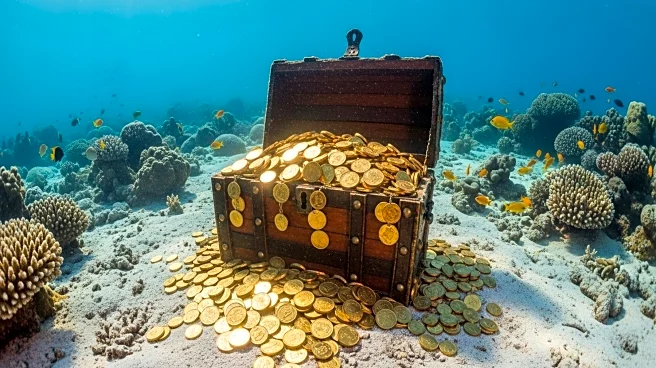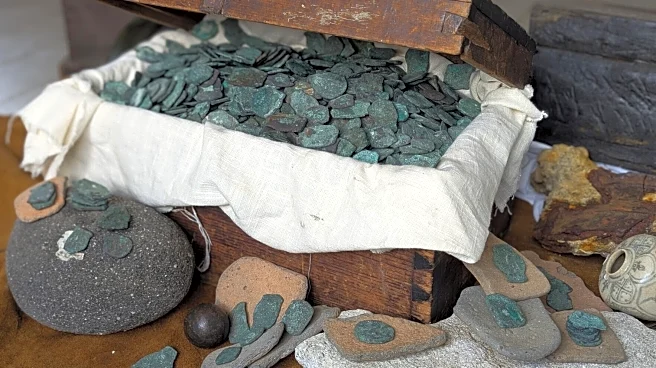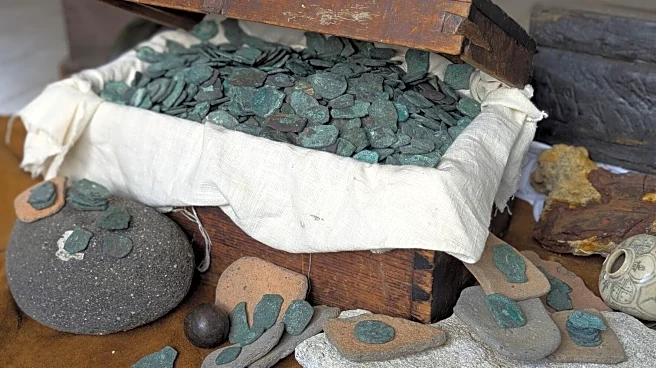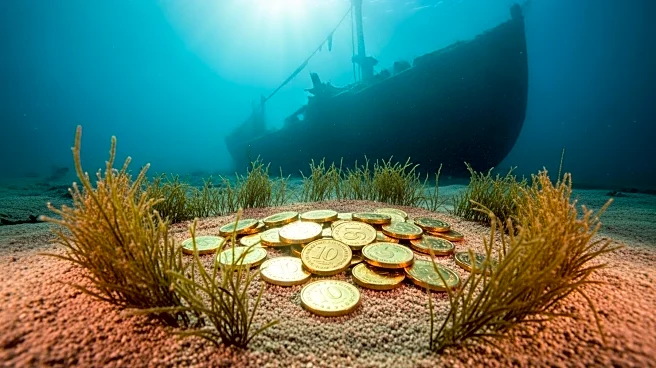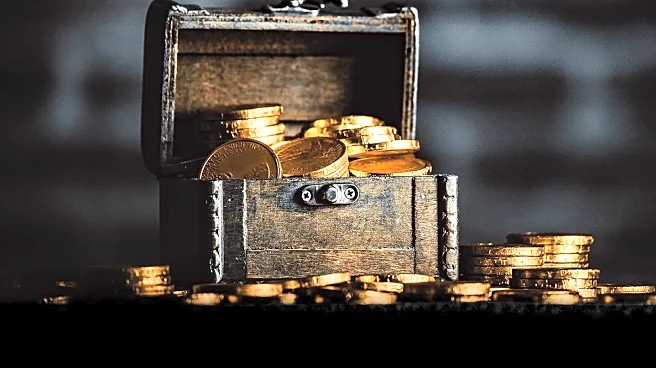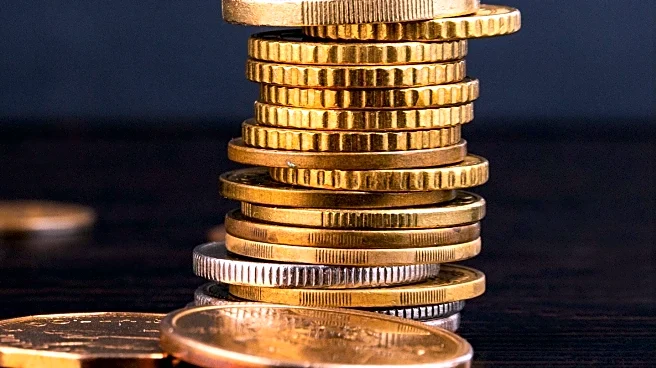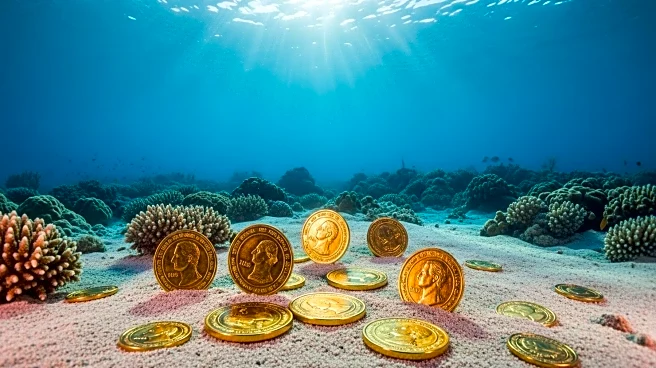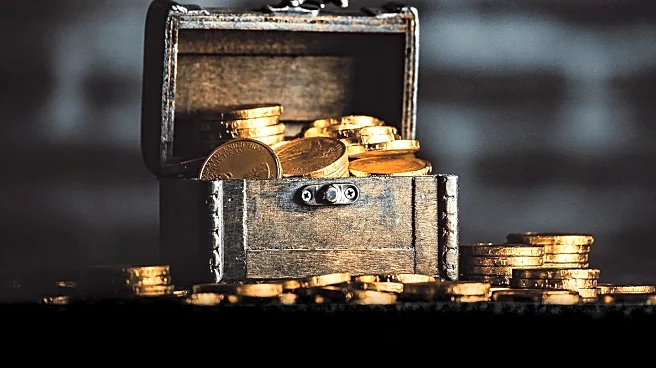What's Happening?
A team of excavators from the shipwreck salvage company 1715 Fleet – Queens Jewels LLC has uncovered over 1,000 silver and gold coins along Florida's 'Treasure Coast.' These coins, believed to have been minted in the Spanish colonies of Bolivia, Mexico, and Peru, are estimated to be worth $1 million. The discovery is part of a long-standing tradition of treasure hunting in the area, where a Spanish fleet laden with treasures sank during a hurricane in 1715. The recent finds will be divided among the salvage company, its subcontractors, and the state of Florida, as per state law. The coins will undergo a conservation process involving reverse electrolysis to remove encrustations before being documented and assessed.
Why It's Important?
This discovery highlights the ongoing allure and economic potential of treasure hunting along Florida's coast. The recovered coins not only add to the historical narrative of the 1715 Fleet but also support a niche industry of professional treasure hunters in the region. The division of the finds ensures that the state retains a portion for research and public display, contributing to cultural heritage preservation. The economic impact extends to local businesses and tourism, as such discoveries often attract enthusiasts and historians to the area.
What's Next?
The coins will be cleaned, documented, and assessed in the company's archaeological lab. State officials will review the inventory to decide which artifacts to retain for public collections. The salvage company and its subcontractors will prepare for future expeditions, potentially using the proceeds from this find to finance next season's operations. The state will continue to regulate and issue permits for treasure hunting, balancing economic interests with cultural preservation.
Beyond the Headlines
The legal framework governing treasure hunting in Florida underscores the ethical considerations of archaeological exploration. By requiring permits and retaining a portion of finds, the state aims to protect its underwater cultural resources while allowing for controlled exploration. This approach fosters public engagement and education about the historical significance of such discoveries, promoting a deeper appreciation for the state's maritime heritage.

